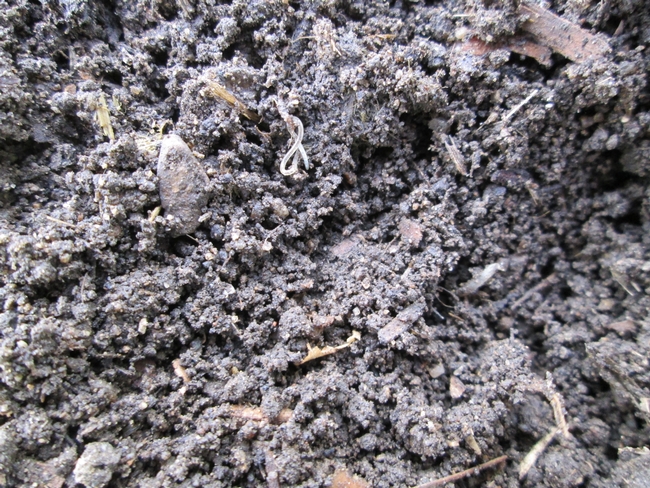Blessed with good soil, I usually grow all of my vegetables in the ground, but this year I was tempted to create a raised bed for strawberries with space for some vegetables too. I went to town on the soil preparation and during the winter dug in my precious supply of leaf mold and some horse manure from the local stables and then before planting hoed in some commercial soil amendment too.
I sowed ornamental blue wheat, spinach and cilantro all of which germinated well and I planted the strawberries in late March. As I was planting them I noticed a lot of tiny wriggling worms in the holes. I looked at them with a hand lens and saw that they were segmented and legless, whitish and almost transparent. I mistakenly assumed that they were baby earthworms.

While searching for the culprit, I found that the soil was very wet, and teaming with the tiny wriggling worms which after visiting our Farm Advisor, I learned were white worms in the family Enchytraeidae.
It's likely the chard actually was being eaten by roly-polies* or earwigs as these little worms wouldn't be able to eat foliage. Roly-polies also like moist conditions with plenty of organic material to consume so this seems like a reasonable pest.
Enchytraeid worms are sometimes found in flower pots, hence their common name of "pot worms." These are basically beneficial since they live on fungus and decaying organic matter which releases nutrients for plants and aerates soil.
Like earthworms, they are true worms (Annelids). These are often found in moist conditions with high organic matter and a fair amount of acidity. That usually describes the mix in flower pots. Their presence when you're trying to raise worms for vermicomposting can mean there is a problem, but in the garden they are harmless.
These little critters were a good reminder of the importance of proper irrigation. They are present because of all the moisture. It is obvious that I need to alter the irrigation amounts in this highly enriched area of the garden.
________________
* Also called sowbugs or pillbugs. They're not really "bugs" but soil-dwelling crustaceans.
